- The future of dealings lies in moving towards a modern economic alliance built on trade, investment, and resilient supply chains
Pakistan and Saudi Arabia have enjoyed warm relations since 1947, rooted in centuries-old religious, cultural, and commercial ties. Over the decades, these relations have been reinforced through mutual financial and strategic support, fostering a unique synergy for development. Saudi Arabia hosts nearly two million Pakistanis, whose contributions range from building the Kingdom’s modern infrastructure to advancing its healthcare, finance, education, and institutional sectors. This diverse pool of skilled and unskilled manpower remains a valuable asset for the Kingdom. Symbolic monuments in Pakistan, such as the Faisal Mosque, the International Islamic University (established with Saudi funding), and the renaming of Lyallpur to Faisalabad, reflect the depth of this enduring partnership.
Saudi Arabia, the world’s 19th largest economy with a population of 32.4 million and a per capita income of $23,287, is a leading oil exporter and an active member of global forums such as the GCC, OIC, G20, WTO, and OPEC. Its petroleum sector continues to dominate the economy, contributing the bulk of national revenues and exports. Pakistan and Saudi Arabia enjoy close religious, cultural, and trade ties, with bilateral trade in FY-2024 heavily tilted in favor of Saudi Arabia.
Yet trade between the two nations has never been just numbers on paper. It has embodied strategic trust, human ties, and regional stability. As Saudi Arabia marks its National Day, the Pak-Saudi partnership stands at a hinge moment—evolving from hydrocarbons and remittances into a broader agenda of investment-led industrial cooperation, food and energy security, and digital transformation. The opportunity now is to translate historical goodwill into bankable projects and integrated supply chains that serve both nations’ long-term economic priorities.
Historically, bilateral trade gained momentum between the 1950s and 1980s, with Saudi Arabia providing energy supply assurances and Pakistan supplying sustained labor migration. Pakistani manpower became the backbone of Saudi construction, services, and security, while remittances emerged as a critical foreign exchange lifeline for Pakistan. From the 1990s to 2000s, Saudi crude petroleum and refined products dominated imports, while Pakistan exported textiles, rice, and surgical instruments. In the 2010s, remittances from the Kingdom remained Pakistan’s largest inflows, and the trade dialogue expanded to include investment in refining, mining, and infrastructure. Today, Saudi Vision 2030 and Pakistan’s focus on export-led growth are shaping a new economic alignment, with Saudi FDI interest in energy, mining (including Reko Diq), agriculture, logistics, and digital infrastructure.
Saudi Arabia now ranks among Pakistan’s largest merchandise partners. According to trade statistics, Pakistan’s exports to Saudi Arabia reached $734.36 million in FY 2024–25, driven by cereals ($198.94 million), meat and edible offal ($150.17 million), textiles, leather, seafood, dairy, and beverages. This profile underscores Pakistan’s strength in agri-food and labor-intensive manufacturing, though the small share of high-value exports signals an untapped potential for diversification into pharmaceuticals, IT, and higher-end industrial goods.
On the other side, Pakistan’s imports from Saudi Arabia totaled $4.47 billion in FY 2024-25, dominated by mineral fuels worth $3.25 billion, alongside plastics, fertilizers, and organic chemicals. This reflects Pakistan’s structural reliance on Saudi hydrocarbons, while modest imports of industrial inputs indicate the beginnings of diversification. However, the persistent trade deficit underscores the need for a more balanced and strategic trade framework.
Between February 2024 and February 2025, Pakistan’s exports to Saudi Arabia grew by 5.11 per cent, while imports surged nearly 79 per cent, widening the trade gap. Despite this imbalance, significant opportunities remain: Pakistan can expand exports in textiles, rice, seafood, dairy, leather, and even religious tourism-linked sectors like sheep supply for Hajj. In FY-2024, Saudi Arabia imported $214 million worth of sheep and goat meat, ranking as the 10th largest importer globally. While most of these imports came from Australia ($87.8 million) and New Zealand ($39.8 million), Pakistan’s exports jumped from $6 million in FY-2022 to $26.2 million in FY-2023, making it the fastest-growing supplier. This shift reflects Saudi Arabia’s gradual diversification away from traditional exporters, opening a valuable window for Pakistan to strengthen its agri-food presence.
To seize this momentum, Pakistan must tackle trade barriers — compliance with SPS and technical standards, certification, and market intelligence gaps — while activating institutional mechanisms like the Joint Business Council, business delegations, and B2B linkages. Looking ahead, Pakistan–Saudi Arabia trade must evolve beyond remittances and hydrocarbons into a strategic partnership of investment, industrial collaboration, and resilient food and energy supply chains—transforming historic goodwill into a modern economic alliance.
The authors are serving as faculty members at the Namal University, Mianwali (Punjab), Pakistan.
Dr. Azhar Rasool (azhar.rasool@namal.edu.pk) is an Assistant Professor in the Department of Business Studies and a member of the Nisar Aziz AgriTech Center (NAAC) at Namal University, Mianwali.
Ms. Zunera Batool (zunera.batool@namal.edu.pk) is a Senior Lecturer at the Department of Business Studies, Namal University.



